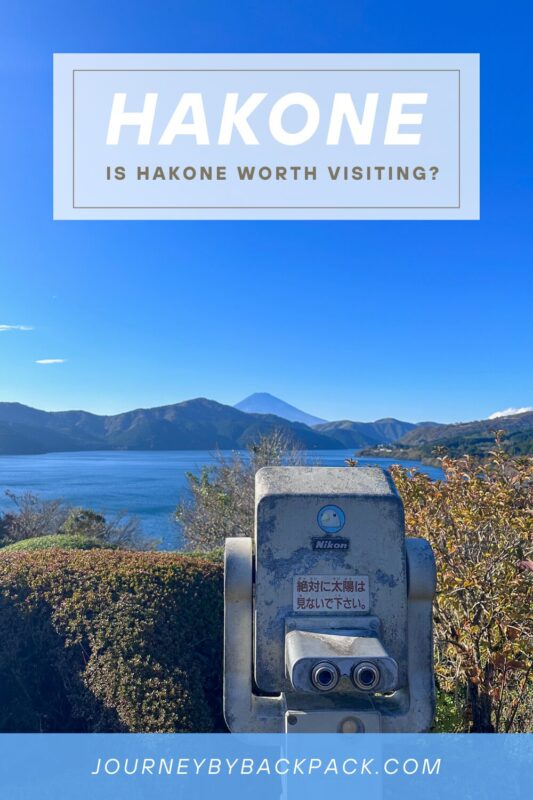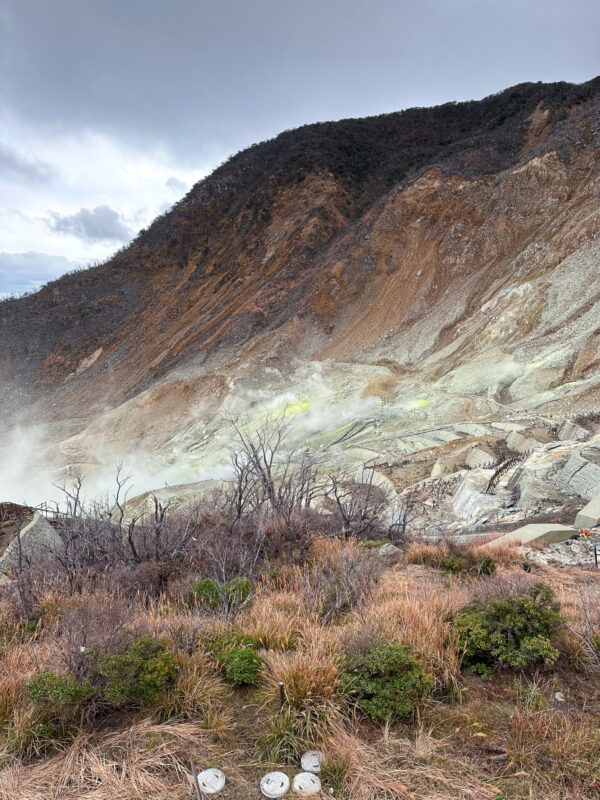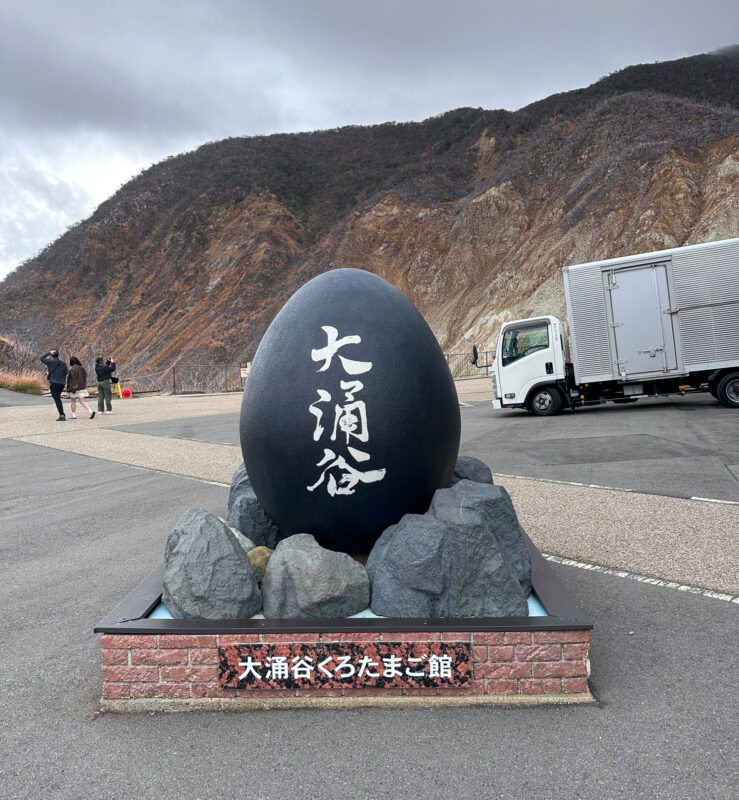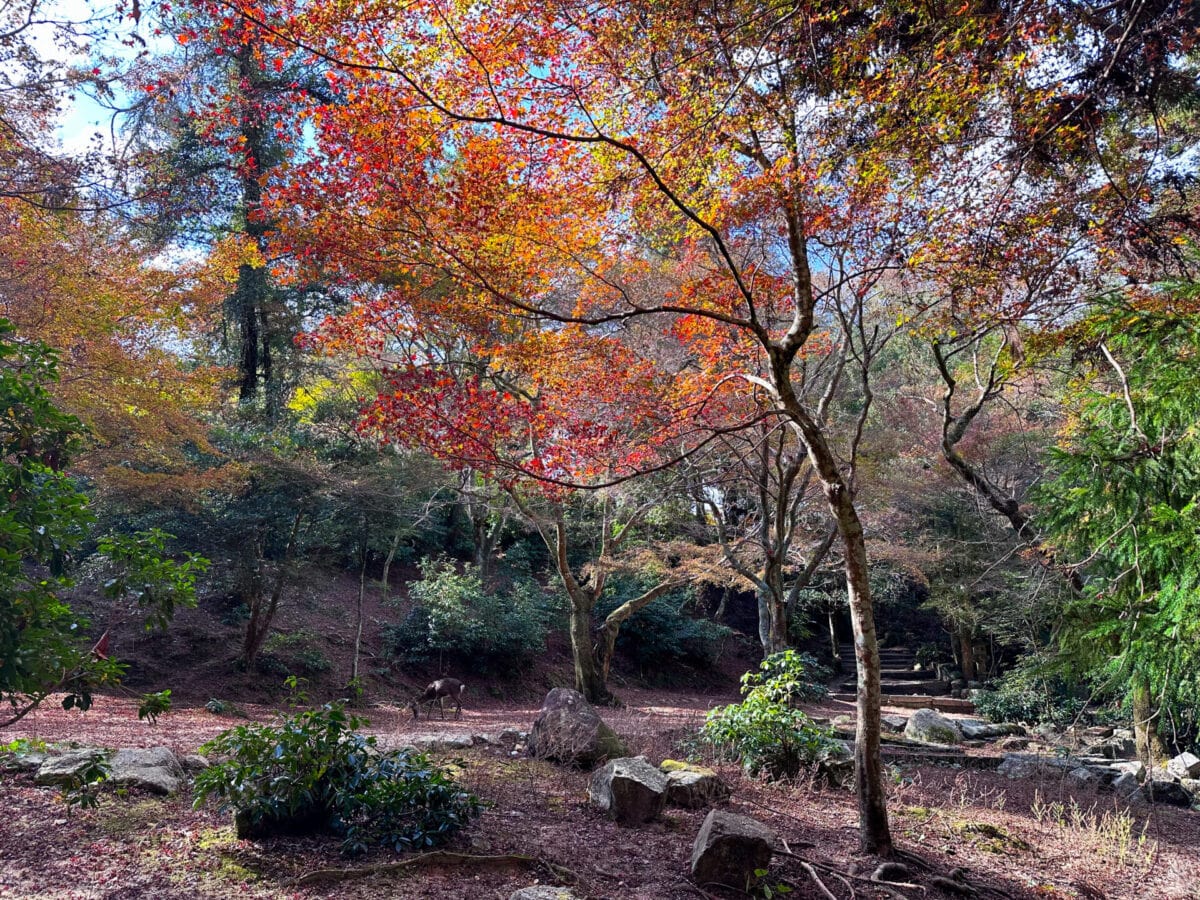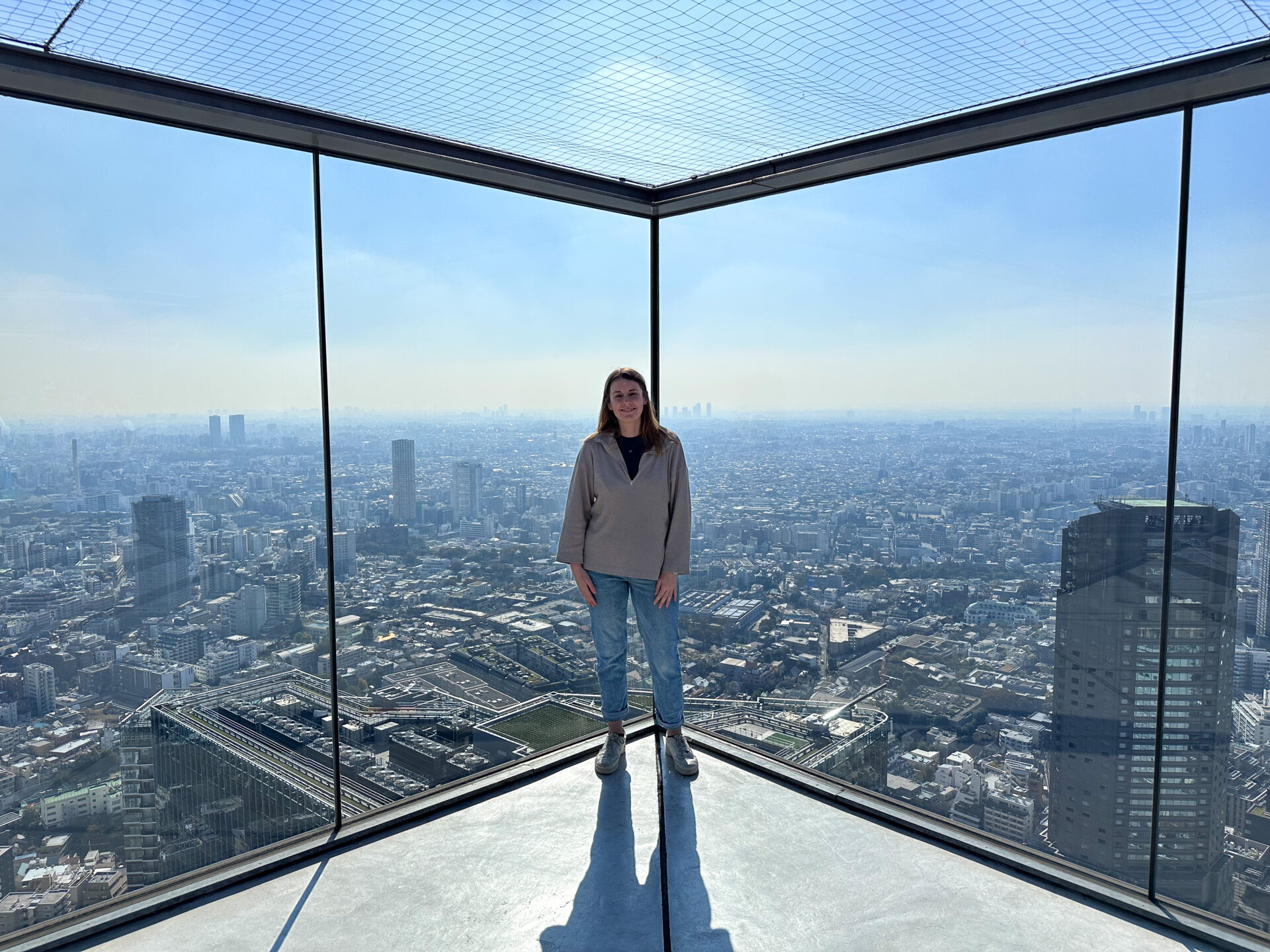If you’re currently planning a trip to Japan and asking yourself “is Hakone worth visiting?”, I’m here to tell you it absolutely is! Hakone turned out to be one of my favourite places during my solo trip to Japan.
The beautiful area of Hakone is nestled in the mountains surrounding the iconic Mount Fuji. The area is known for its hot springs (Onsen), incredible nature and insight into traditional Japanese culture.
While visiting Hakone from Tokyo is a popular and easy option, it still takes a chunk out of time out of your itinerary. Japan is full of epic destinations and narrowing down where to visit is no easy task. This is where I come in…
In this post, I’ve shared 10 reasons to convince you to include Hakone in your Japan itinerary. Hopefully, by the end of this post, you’ll be convinced that Hakone is worth visiting.
Here are 10 reasons to visit Hakone.
The natural beauty
Hakone isn’t far from Tokyo, but you wouldn’t realise that when you’re there. It’s the complete opposite of Japan’s capital. Stepping off the train in Hakone, it almost felt like arriving in an entirely different country.
Hakone lies in the stunning mountains surrounding Mount Fuji. Its lush and scenic setting makes it the perfect place to embrace the serenity of Japan’s countryside. For most people, a trip to Hakone is the perfect excuse to slow down and experience a different side to Japan.
The Hakone area is filled with tranquil forests and scenic mountains ready to be explored. Not to mention the magnificent Lake Ashi.
If you’re looking to see a different side to Japan while visiting, add Hakone to your itinerary.
The Owakudani Volcanic Valley
Lying in the foothills of Mount Fuji, Hakone is a hot spot for volcanic activity. One of the best places to see the true power of the Earth is by visiting the Owakudani Volcanic Valley.
Owakudani is part of the Hakone loop, so it makes for an easy and convenient activity. The area is filled with powerful sulphur vents and natural hot springs. While at Owakudani, it’s also possible to see Mount Fuji (on clear days).
The journey to Owakudani is an adventure in itself. If travelling from Hakone-Yumoto Station, you’ll need to take the Tozan train, Cable Car and ropeway. Once there, admire the volcanic activity, visit the Geo Museum and try one of the famous black eggs.
Owakudani is truly a unique place in Japan. There aren’t many places in the country (or on Earth) where you can get this close to so much volcanic activity.
The local cuisine
Hakone’s culinary scene is a treat for Japanese food enthusiasts. When you arrive in Hakone-Yumoto, it doesn’t take long to realise that food is a huge part of Hakone’s culture.
The Owakudani Valley is known for its “Kuro Tamago”, or better known as black eggs. These regular eggs are boiled in waters that have been naturally heated by the volcanic activity. The Sulphur in the water turns the eggshell black, but the egg tastes the same. It’s believed that eating a black egg can add seven years to your life.
The Hakone area is also known for serving the classic Japanese Kaiseki. This is a traditional meal using seasonal ingredients. It’s served in small portions and there are multiple courses. To experience a true Kaiseki, stay in one of Hakone’s many ryokans.
The main town of Hakone also has a variety of delicious restaurants serving classic Japanese cuisine and street food. I’ve spoken more about where to eat in Hakone in my Hakone guide.
The unique transport methods
Bored of trains and busses? Well, you’re in luck. Travelling around Hakone means you’ll get to experience several types of transport methods.
This includes the Hakone Tozan Railway which climbs steep switchbacks up the mountain and takes you through a beautiful woodland. Next up is the famous Hakone Cable Car and the Hakone Ropeway. The Hakone Ropeway is a particularly memorable experience. The journey takes you above the Owakudani Volcanic Valley and boasts stunning panoramic views, including of Mount Fuji.
Last, and by no means least, is the Lake Ashi Sightseeing Cruise which involves a trip across the lake on a pirate ship. To complete the full Hakone Loop, you’ll need to use all of these different transport methods.
The views of Mount Fuji
The Hakone area is known for its magnificent views of Mount Fuji. On clear days, Mount Fuji acts as a stunning backdrop for many areas in Hakone. In fact, Hakone is one of the best places in Japan to see Mount Fuji.
If you’re lucky enough to visit Hakone with clear weather, one of the best places to see Mount Fuji is on the journey to Owakudani. The Hakone Ropeway boasts incredible views of Fuji, especially if travelling at sunset. Once you’ve arrived at Owakudani, I’d recommend walking over to the car park for even more incredible Fuji views.
Another epic spot to see Japan’s famous volcano is the Mishima Skywalk. This 400-meter-long suspension bridge has some of the best views of Fuji in the area. It’s quite far away from the main Hakone Loop meaning it tends to be less crowded, but is well worth visiting if you have the time.
Other places to see Mount Fuji in Hakone include the Lake Ashi and the Onshi-Hakone Park. If you’re a keen hiker, consider hiking to the peak of Mount Kintoki. This 3-to-4-hour hike rewards hikers with panoramic Fuji views from the top.
It’s important to note that Fuji is not always visible from Hakone. You need to be lucky and have completely clear skies to see her. Normally, the autumn months tend to be one of the best times to see Mount Fuji, especially the month of November.
If you’re keen to see the iconic Mount Fuji, a trip to Hakone is absolutely worth it.
The Autumn Colours and Cherry blossoms
Hakone is known for both the autumn colours (Momiji) and vibrant cherry blossoms (Sakura). I visited Hakone in November, and it was one of the best places in Japan to see the autumn colours.
Thankfully, you won’t have to search far to find the red, golds and oranges of autumn. One of the best places in Hakone to see the autumn colours is the popular Lake Ashi. The shores of Lake Ashi are surrounded by lush forests. As the temperatures drop, the area lights up with the vibrant autumn colours. A ride on the Lake Ashi Sightseeing Cruise will reward you with views of some of the best autumn colours in Japan.
If travelling Japan during the Cherry Blossom Season, consider a trip to Hakone. The area is home to several kinds of cherry trees which bloom late March and into April. Gora Park is a fantastic option to see the cherry blossoms. There are a variety of cherry trees in the park to admire.
A ride on the Hakone Tozan Train is a fantastic option in both the autumn and spring. During spring, the blooming cherry trees line the train track, putting on a show for passengers. In the autumn, the trees turn gold offering a stunning spectacle.
The Therapeutic Hot Springs (Onsen)
The Hakone area is well established as being one of the best places in Japan to experience hot springs, or Onsen as they’re called in Japan.
The mineral-rich waters of the hot springs are believed to have healing properties. They have long been part of Japanese culture with many public baths available around the country.
Hakone is a hot spot for these calming hot springs. There are a variety of public baths, hotels and traditional Ryokans with hot springs (Onsen) available.
It’s important to note that tattoos are forbidden in the hot springs. If you have small tattoos, you may be allowed to enter if they’re covered. I’d recommend contacting the Onsen before visiting. In the end, I couldn’t find an Onsen in Hakone which definitely allowed tattoos, so skipped this activity.
Having said that, I’ve heard relaxing in an Onsen is a highlight for many people on their visit to Hakone (not that I’m jealous). If relaxing in hot springs is on your list of things to do in Japan, then a trip to Hakone is well worth-it.
The Lake Ashi Sightseeing Cruise (Pirate Ship)
Want to ride a pirate ship around a lake? Of course you do! Well, luckily in Hakone you can do just that.
The Lake Ashi Sightseeing Cruise has long been established as one of the best things to do in Hakone. The boats are giant pirate ships that transport guests around the stunning Lake Ashi.
As well as getting to ride on a pirate ship, you’ll be rewarded with incredible views. The shores of the lake are surrounded by incredible forests with views of the mountains. On clear days, it’s one of the best spots to see Fuji herself.
The Pirate Ship goes right past the famous Hakone-jinja Shrine. This beautiful Torii gate lies in the shallow waters of Lake Ashi making for a scenic photo.
If you weren’t convinced enough already, the Lake Ashi Sightseeing Cruise is yet another reason to add Hakone to your Japan itinerary.
The culture and history
Aside from its natural beauty and hot springs, Hakone is steeped in Japanese history. If you’re keen to learn more about Japan’s interesting past, a trip to Hakone is worth your time.
One of the best places in Hakone to immerse yourself in Japan’s past is the Hakone Checkpoint. This Checkpoint was once part of a series of important Checkpoints along the Tokaido Road. This road connected Tokyo and Kyoto during the Edo period.
The Hakone Checkpoint has been reconstructed to allow visitors to explore this traditional site and learn more about its importance. It’s also possible to walk along part of the Old Tokaido Road. The road is now nestled amongst a towering forest. It’s a perfect short walk in Hakone.
Another spot to experience Japanese culture is the famous Hakone Shrine. This important shrine dates back to 757. The main Shrine is hidden amongst the forest. It makes for a serene and spiritual experience.
The Heiwa No Torii Shrine (Hakone-jinja Shrine) is another famous cultural spot in Hakone. The beautiful Torii gate lies in the waters of Lake Ashi, creating one of the most scenic Torii gates in Japan.
The museums and art galleries
Hakone is home to several museums and art galleries. One of the most famous is the Hakone Open Air Museum. The museum displays an array of outdoor sculptures which sit against the backdrop of the beautiful mountains.
Another popular spot in Hakone is the Pola Museum of Art. The gallery here houses a collection of art from a range of artists including Monet and Renoir. The gallery’s building is in Sengokuhara, a beautiful and secluded wooded area. Surrounded by a towering beech forest, the Pola Museum of Art is designed to bring art and nature together.
The Venetian Glass Museum is also found in Hakone. This unique museum features Italian style buildings with a collection of over 100 pieces of Venetian glassware. I didn’t make it to this spot, but it looks like an interesting place to visit.
I hope this article has convinced you that Hakone is well worth visiting. It’s the perfect place to relax, get closer to nature and learn more about Japanese culture.
Still questioning if Hakone is worth visiting? Check out my guide to Hakone which includes how to get to Hakone, if the Hakone Free Pass is worth it and how long to spend in Hakone.
